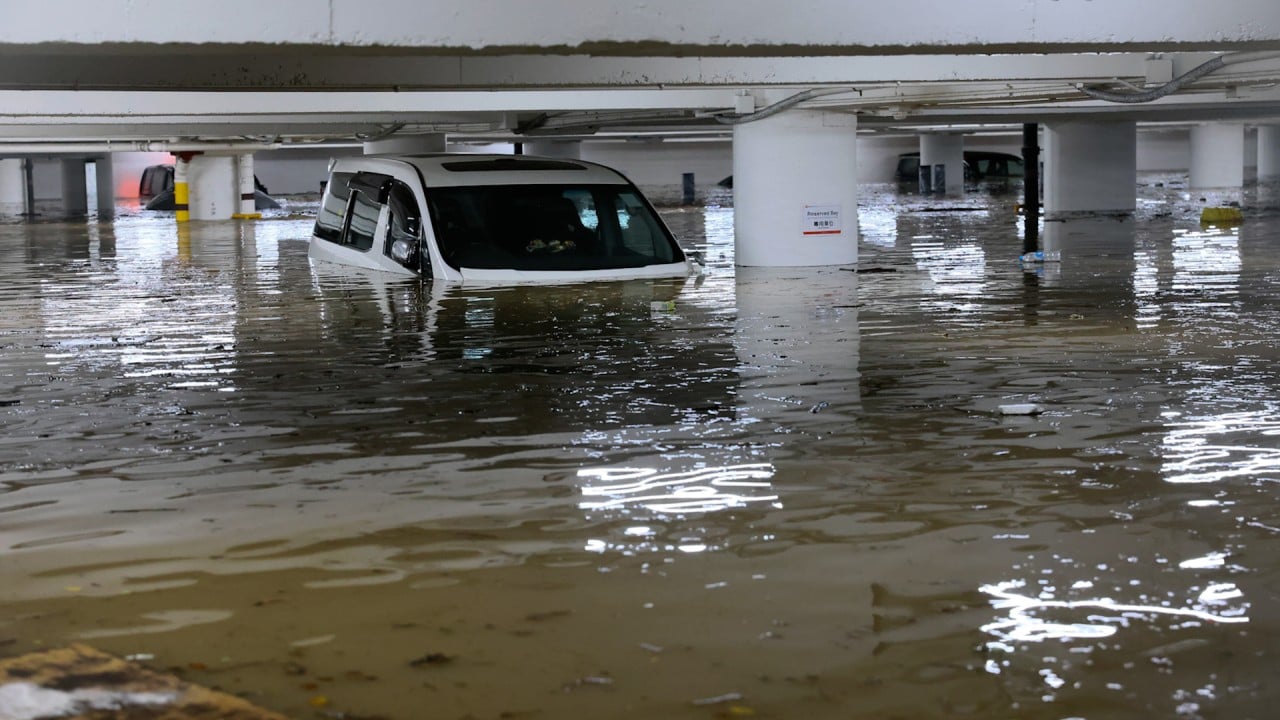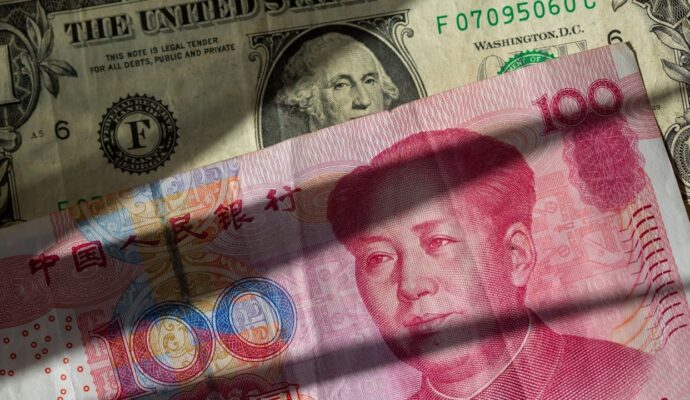On Thursday evening, Shenzhen announced a red alert and urged emergency measures be taken to defend against the storm. Two stops on the No.16 metro line, which passes through Longgang district in the eastern part of the city, stopped operating because of flooding risks.
Xi Jinping visits flood damaged crops in China’s valuable northern food bowl
Xi Jinping visits flood damaged crops in China’s valuable northern food bowl
The district government warned of potential flooding around Longgang Zhongxincheng, the most prosperous commercial area in the region. Meanwhile, 151 indoor emergency shelters in the district were opened to the public.
Advertisement
“We ask that people and cars outside this region not travel to the commercial compound, while those on the ground floor and basement of the compound should be evacuated as soon as possible,” said a notice from the district government on Thursday night.
Jin Ni, a woman who lives near the commercial area, said when she came home from work around 8.30pm, the streets were flooded and cars were travelling slowly. In a video she sent to the South China Morning Post, vehicles can be seen going through ankle-deep water, sending waves to the pavement.
“All through the night, I could hear fire trucks going on rescue missions in the area,” she said.
Ji said the rain had ceased in Longgang by Friday morning and floodwater had receded, but that some of her friends in nearby Luohu district, which also borders Hong Kong, had lost electricity and water and they were considering hoarding food.
Around midnight on Thursday, it was announced that the Shenzhen Reservoir would start releasing water through the Shenzhen River and the first water was released around 12.15am.
Advertisement
Wang Changxiao, a director at the Shenzhen emergency management bureau, told local media the timing was prompted by the rapid rise in water level because of the extreme rain.
‘Climate breakdown has begun’, warns UN chief in hottest year on record
‘Climate breakdown has begun’, warns UN chief in hottest year on record
The water release would start at 80 cubic metres per second, which was considered relatively small, he said, to limit the impact on downstream areas. Residents who live along the river were advised to evacuate.
Advertisement
Neighbouring Hong Kong also received a notice from Shenzhen that warned of possible flooding in the New Territories.
Around 3.15am, the reservoir release was adjusted to 120 cubic metres per second.
As the red alert continued on Friday, all schools were closed and many companies, including Tencent, told employees to work from home.
By Friday afternoon, all flights at the Baoan International Airport were still operating, but a few train services had been halted. The Liantang and Wenjindu crossings were also closed because of flooding.
Advertisement
Xiong Yang, a former water-treatment engineer in Shenzhen, said the city often flooded before 2000 and he had taken part in many citywide designs to help treat the issue.
He said officials made an “extreme weather” announcement with every rainstorm and flooding, but that there should be data predictions before the storm to better prepare.
“The reservoir water release only had a short notice period, which meant there was not enough time to send the alert, and that there is a lack of forecast data,” he said. “This needs our attention and improvement; especially as extreme weather is becoming more frequent around the globe.”
Advertisement




